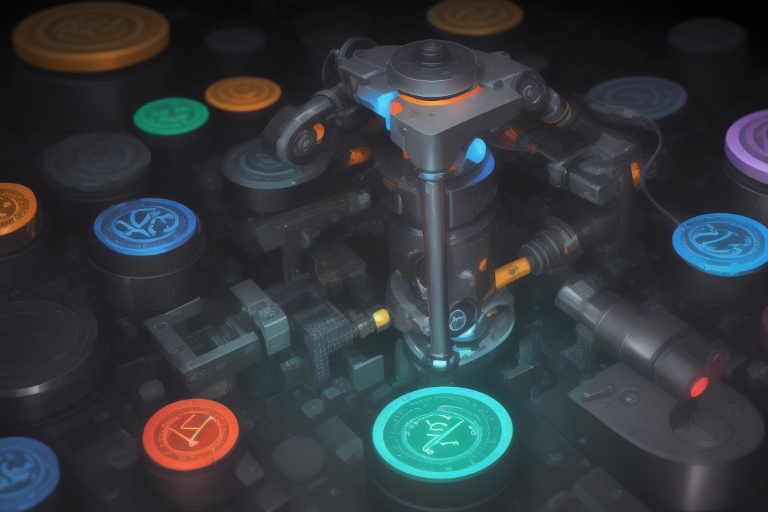Artificial intelligence (AI) sparks vigorous debates and holds a prominent place in both popular culture and technological research. The field gained additional public attention with a widely acclaimed movie about Alan Turing and the introduction of autonomous vehicles. Despite the fears and misconceptions that often surround AI—concerns that technology may one day make humans redundant—it's crucial to approach this topic with nuance and an appreciation for its complexity.
Artificial intelligence (AI) sparks vigorous debates and holds a prominent place in both popular culture and technological research. The field gained additional public attention with a widely acclaimed movie about Alan Turing and the introduction of autonomous vehicles. Despite the fears and misconceptions that often surround AI—concerns that technology may one day make humans redundant—it's crucial to approach this topic with nuance and an appreciation for its complexity.
Understanding the Four Categories of AI
AI is an umbrella term that actually describes four major categories, each with its distinctive goals and methodologies:
Classical Artificial Intelligence dates back to the mid-20th century and focuses on replicating human behavior through computer systems. Early work in this area delved into natural language processing, symbolic reasoning, and strategic game playing.
Human-Computer Interaction (HCI) diverges from classic AI by aiming to augment human intelligence rather than duplicate it. HCI has yielded practical applications such as intuitive graphical user interfaces and mobile computing advancements.
Human-Machine Collaboration entails researchers seeking methodologies that harvest the collective strength of human cognition and machine processing. The goal is to enable humans and machines to work together in ways that surpass the capabilities of either alone.
AI that Directly Supports Humans represents an area where AI systems are utilized to assist humans, thereby increasing efficiency and precision in various professions, such as by aiding medical diagnostics or shaping personalized content through recommendation systems.
Classical Artificial Intelligence: Promise and Pitfalls
The first category, classical AI, is often associated with leading-edge visions of the future. It's grounded in the aspiration to build systems that can imitate or even surpass human intelligence. The story of classical AI has been one of incredible innovation, but also of expectations exceeding reality.
One significant outcome from classical AI is the advent of expert systems, especially prominent in the 1970s and 1980s. These systems, which tried to encapsulate the decision-making expertise of skilled practitioners in rule-based systems, did enjoy success within constrained contexts. Nevertheless, they have, at times, produced results in conflict with established human expertise, showing that human judgment can't be fully replicated by algorithms.
The Rise and Impact of Human-Computer Interaction
The maturation of HCI marks a critical shift in the focus of AI research. HCI's more attainable goals facilitated the development of user-friendly technologies, transforming computer interfaces and making them accessible to a wider audience. This field is a testament to the idea that the purpose of technology is to serve humanity, by making tools more intuitive and responsive to human needs.
Bridging Human and Machine Intelligence
Efforts to bridge the gap create a partnership between human intuition and machine analysis that is greater than the sum of its parts. Such collaborations unlock new avenues of problem-solving and innovation, picturing a world where AI serves as a powerful ally to human intellect rather than a rival.
AI's Role in Supporting Human Work
The fourth category confronts the fear of obsolescence head-on by developing AI technologies that are not meant to supplant human workers but to bolster their work. In fields as varied as healthcare, entertainment, and logistics, AI tools are proving to be invaluable allies, enhancing human capabilities rather than diminishing them.
The Future of AI and Human Collaboration
As our journey into the future of artificial intelligence continues, it's clear that AI is not a monolithic force destined to compete with humans. It's a rich tapestry of approaches, all of which can contribute positively to human society if guided by thoughtful consideration of their implications.
In view of this, the intersection of AI with the workforce must be navigated with foresight. Machines possess remarkable abilities to handle repetitive tasks, analyze large datasets, and function in hazardous environments. However, the ingenuity, ethical judgment, and empathic understanding inherent to humans are irreplaceable traits that machines are far from replicating. Recognizing and valuing these human qualities is fundamental to ensuring that AI enhances rather than diminishes the human experience.
The evolution of AI continues to be an unfolding story, one marked by staggering potential and profound questions. With the right balance between human ingenuity and machine efficiency, we can create a future that harnesses the full promise of artificial intelligence—as a force for empowerment, not replacement. By embracing the complexities and multidimensional nature of the field, we inch closer toward a harmonious coexistence with the machines we create, drawing on the full scope of human and artificial intelligence to reach new heights of achievement. The confluence of AI and human endeavor is not just a possibility—it's the pathway to a future filled with limitless possibilities.
Information for this article was gathered from the following source.


